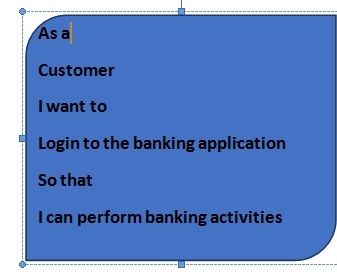Let us discuss about some simple domains now to get some domain knowledge; I feel this will help you to get some idea about domain knowledge. Let us discuss about Website design and development and how it will be taken place.

As we are reading blogs and accessing multiple websites on our daily life, we know what is website and how it looks like and what purpose wee will browse the websites. Let us discuss in depth what are the things to be taken care before developing website. Here we can observe our website https://www.bacareers.in also for reference.
Website Design and Development:
Website will contain information/content and can be accessed though network. It can be on private network (intranet) or public network, popularly known as internet. Website can be built using html or flash or combination of both HTML and flash. Most commonly we will find HTML. Using HTMl tags/syntax web page will be created. Now a day’s websites can be building with wordpress also. It works with plug-in.
A website can be of one page or more than one page. Website is commonly used for publishing information or advertise. Website is one of the powerful tool for advertisement /promotion. Not only promotion but also e-commerce (buying & selling online, Ex: Amazon, Flipcart), news websites like times of india, gaming sites needs website. In simple language we can say any business; anything in this world has a website. Education websites Ex: https://www.bacareers.in and Some other websites related to Education.Top Websites to improve knowledge as a Business Analyst.
Common elements used along with HTML are CSS (cascading Style Sheets), JS (java Script) and Flash (flash is optional). People prefer HTML compared to flash because flash page Loading time is bit long compared to HTML page. Web page usually ends with extension .html or .htm (other than.html and .htm there are .jsp, .aspx etc but let us not get too technical, Business Analyst need not know what technologies are using to built a website, just I mentioned here for understanding purpose).
A website needs a domain name (note this is not the domain which we are talking – do not get confused) DOMAIN NAME means the website link name which will be unique always. For example bacareers.in, this is the domain name for my website. Like www.google.com ,www.youtube.com , www.yatra.com , www.facebook.com
If you see here bacareers.in, google.com , youtube.com, yatra.com are called domains. Domain name cannot be duplicated. Only one domain exists. There are some servicing companies and whoever wants website they should go to register DOMAIN NAME. Usually there will be some charges for registration and annual renewal charges as well. Not only .com’s there are different extensions like .info, .net, .tv, .biz, .org, .gov, .in etc these are also website domains like .com (For Example: Godaddy, We can visit godaddy website to understand how to check the domain availability and hosting plans and charges, this is for your knowledge purpose) For Example I mentioned godaddy, there are so many domain and hosting providers, you can find more once you google it.
Once DOMAIN NAME is registered, website needs hosting space, usually called server. There are so many companies which provides hosting service. We need to purchase some space from them like 50 MB, 1 GB space . Once space is purchase, after website is built we can host website.
Domain Name & hosting space should be pointed so that when people type https://www.bacareers.in website hosted on server (hosting space) will display.
Sample BA Document Templates
FREE DOWNLOAD |
How Domain Name and Hosting are pointed? Let us not go technical again but for your information at high level, there will be something called name servers; we need to map the name servers of hosting account and domain account.
Some Domain registration service providers will also provide hosting space as well.
How does website project happen? Mainly what does business analyst does here? Let’s see:
In a software company which works on Website Design & Development there will be team usually;
As we discussed in previous articles, there is a team in Software Company to develop the product and get the orders. Let us observe below who are the stake holders in this project and their roles.
- Business Development (BD) team / marketing team: These people get website orders
- Business Analyst – get requirements (what to be designed? How to be designed? What information? How should be the flow? Etc.
- Designers (Graphical Designers / UI Designers) – Create designs.
- Deployment / Implementation Engineer: Deploy or host on server
- Project Manager: manages the project and delivers on time.
You know about marketing people, they just get projects /orders. What does business analyst do in website design & development projects? Once project is awarded Business Analyst will start with requirements. Most common thing in website projects are sending initial questionnaire, where in client can answer in, Yes/No format for most of the questions. Questionnaire will be like;
- Project Name?
- Website name? Or what name should appear on website? Ex : bacareers.in
- Does Domain Exists (note: This domain is different one). If yes, what is the name?
- Do you have a Logo? If yes, provide us in a Jpeg or Png format; If no, do you want us to design logo for you?
- How many pages to be created? And provide names for the pages. Like service, about us, contact us, Blog, Articles and Faq etc.
- Do you need Form for contact us page? Where in user can submit details and email will be triggered.
- Mention some of the reference websites and provide link.
- Who are your competitors? Provide some information
- What colors to be used for website (color theme)?
- Is it one color or two colors? Or more than 2 colors? Name the colors?
- Who are the audience for the website? Like children, business people etc
- Brief about your business?
- Do you have any hand-outs of your business? Like advertisements, business cards, brochures etc.
- Do you have any specific images/pictures of your business? Or you want to add any pictures on website? If yes, please send in jpeg or png format
- Do you need SEO (Search Engine Optimization) done for website? If yes provide Meta tags or key words.
- Etc (some more questions)
Note : Sometimes client may ask us to prepare prototype like how website looks like. In this case Business Analyst will prepare the prototype with using prototyping tools, here buttons, fields and everything will be there but functionality will not work. Because of prototyping client can also understand how his website will looks like and we can easily communicate with the development team also exactly what we are looking for.
Sometimes client will answer all the questions and some time partially, business analyst will have a call or meet client to discuss on questions and finally have answers.
Once answers are ready business analyst will discuss with Graphical Designers about the concept and requirements. Graphical designers will create some sample designs (usually designs will be created using tools, many tools available)
Business Analyst will share sample designs in a jpeg format (having water mark – water mark will be some text or symbol embedded in the sample, so that client does not own it before completion of the project). Usually there will be some recommendations / changes from client and that will be done from designers. Once Design is finalized from client, Business Analyst will get sign-off on design.
Designer will slice the design (Photoshop file .psd) into HTML. Usually Dreamviewer software will be used to slice HTML. Dreamviewer is also an Adobe product. Designer will adjust and tune designs by applying CSS and wherever necessary apply Java Script (for more information on java script, CSS – visit w3shools website).
Finally website will be ready for launch. Before launch website will be hosted on a test server and will be shown to client for final proof reading, testing will be done if any mistakes are there and same will be rectified. Once approved by client – deployment engineer or implementation engineer will deploy website on hosting server and website will be released.
Most Common erros / bugs in website:
- Spelling mistakes
- Cross browser compatibility – like in Mozilla firefox website will look good but in internet explorer it may not and vice-versa.
- Mobile Friendly: Website looks good in desktop and but in mobile may not, like font and color and menus etc.,,,
Whats new/latest in website?
CMS website (Content Management System) – when website is launched and later if client wants to change some text or add new picture into website, client has to come back to designer or software company i.e. client will be dependent on software professionals. If website is built and powered by CMS then client himself / herself can change website content and update without technical knowledge, without HTML, CSS knowledge. With CMS enabled webpage will open in a editor just like MS-Word, whatever needed can be edited/inserted/deleted/updated and all needs to be saved that all. It is very simple. Most common editors used are FCK Editor, Wyswyg editor, Tiny MC editor.
Also some readily available frameworks in PHP are available where CMS will be default like Drupal, Joomla, Typo3 (lets not go in deep.. this is just for information)
So at higher level we have covered important part of website design and development.
Most commonly once website is done, SEO will be initiated (Search Engine Optimization). Let’s not go deep into SEO because SEO itself will become a separate domain. In simple words making website searchable by search engines like Google, yahoo, Bing, MSN.
To make this happen lot of techniques are there like Meta tags identification, keywords, google analytics, google webmaster tools, submitting website for search engines, pay per click, link exchange websites etc.
WordPress Website: If website is built and powered by WordPress then client himself / herself can change website content and update without technical knowledge, without HTML, CSS knowledge. Client can modify whatever they want with using elementor and other plug-in. Wordpress will work with plug-in, so we can install the plug in which we need as per our requirement.
Sample BA Document Templates
FREE DOWNLOAD |












